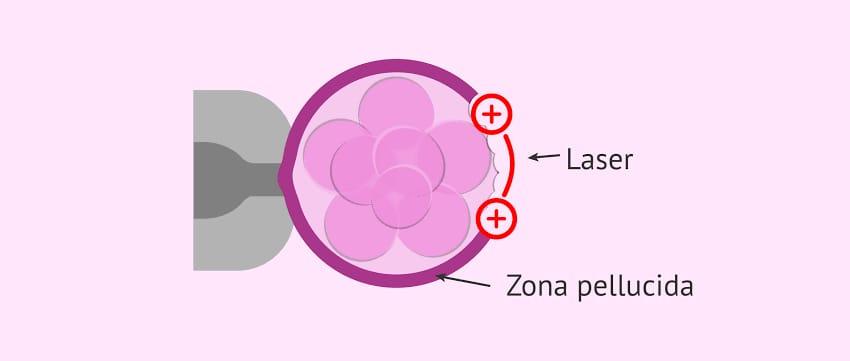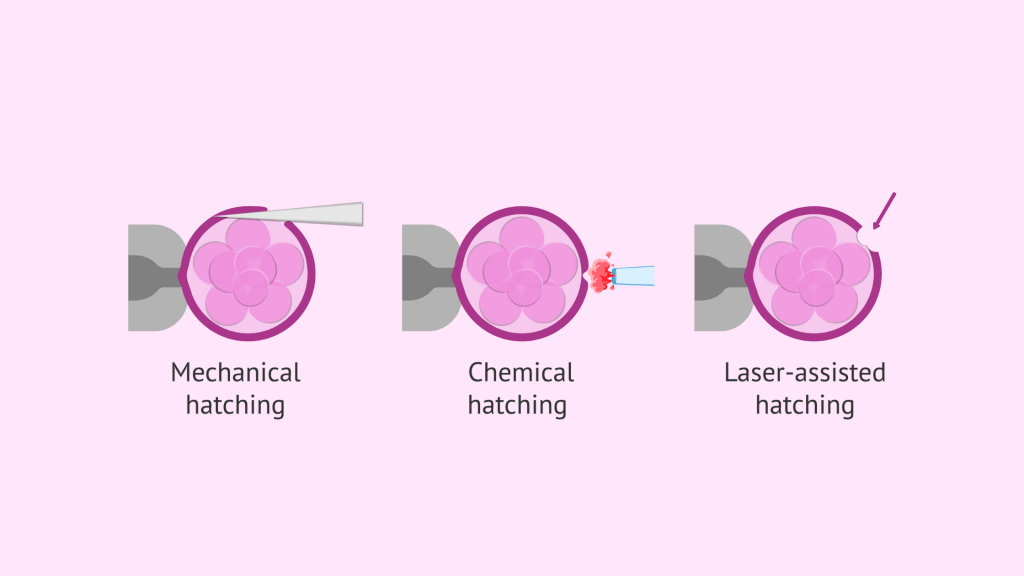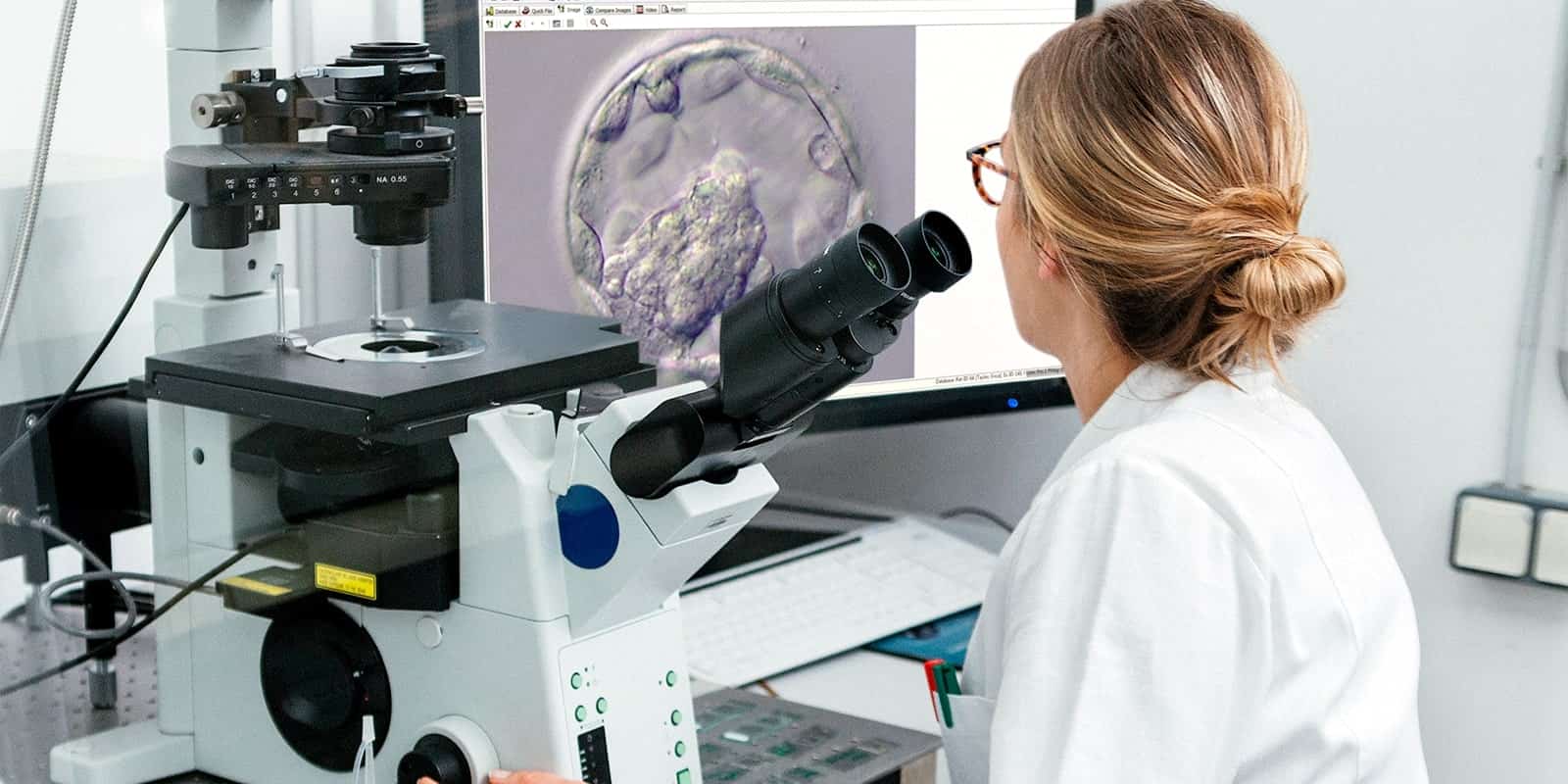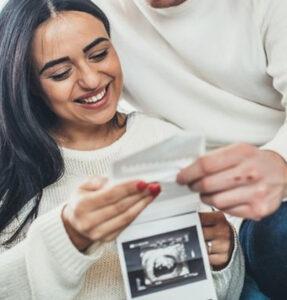Fulfill your dream of parenthood with our specialized Laser Assisted Hatching Treatment. Book your Consultation today and take the first step towards starting your family.
Laser assisted hatching is an advanced technique in IVF that aids embryos in implanting successfully.
Key Details:
Integration in IVF: Performed by skilled embryologists as part of routine IVF when indicated.
Once an egg is fertilized and becomes an embryo, the usual implantation process involves the embryo hatching and attaching to the endometrial lining of the uterus, embedding itself and beginning to grow for pregnancy. However, this does not always happen successfully. Even after placing the embryo in the uterine cavity, implantation may fail to yield a positive pregnancy outcome.
One common reason for failed implantation is the embryo’s inability to “hatch” or break out of its thick outer shell. This is where assisted hatching plays a vital role.
Procedure : It is a method whereby a small hole is drilled in the outer wall of the embryo using laser to enable it to hatch out and get implanted in the endometrial lining of the uterus.


Kanaa Fertility Center is a leading clinic with expert fertility specialists and state-of-the-art technology. With high success rates in IVF, including laser assisted hatching, Kanaa provides compassionate, comprehensive care.
Choose Kanaa for:
Trusted, innovative, and precise assisted hatching solutions.


Kanaa Fertility Center provides expert laser assisted hatching in IVF procedures with state-of-the-art technology. Our team ensures precision and care to maximize embryo implantation and pregnancy success.
· Small risk of lethal damage to the embryo when drilling a hole
· Interference with the natural hatching process of the embryo which may adversely impact success
· Small increase in the rate of twinning especially monozygotic twinning
At present, assisted hatching is considered in a small subset of patients rather than being offered to all. And these are those who fall in the below categories;
1. Those who have had more than two failed IVF cycles with no specific reason
2. Those with poor quality embryos
3. Age of the woman more than 38 years
Though a Cochrane review in 2012 reported slightly increased clinical pregnancy rates in favour of assisted hatching, it was not taken as the dictum since they did not look at live birth rates.
With no proper evidence showing that it definitely benefits pregnancy rates, most international guidelines at present are against offering it in most cases.
You can discuss your specific case situation with the doctor, consider the additional costs and arrive at a decision.
LAH is usually recommended for:
Women over 35 years of age
Patients with thick zona pellucida (embryo shell)
Couples with repeated IVF failures
Patients using frozen-thawed embryos
Cases of poor embryo implantation in the past
Yes, in selected patients, LAH can increase the chances of implantation and pregnancy. It does not guarantee success but can be helpful where the embryo shell may otherwise prevent proper hatching.
Yes. The laser is highly precise and does not harm the embryo. It is considered safer and more effective compared to older chemical or mechanical hatching methods.
The procedure is usually done just before embryo transfer, once the embryos have reached the cleavage or blastocyst stage.
No. Since LAH is done in the laboratory on the embryo (outside the body), it does not cause any discomfort to the patient and requires no additional recovery time.
Not always. LAH is recommended only in certain cases where the chances of implantation may improve. Your fertility specialist will advise whether it is suitable for you.